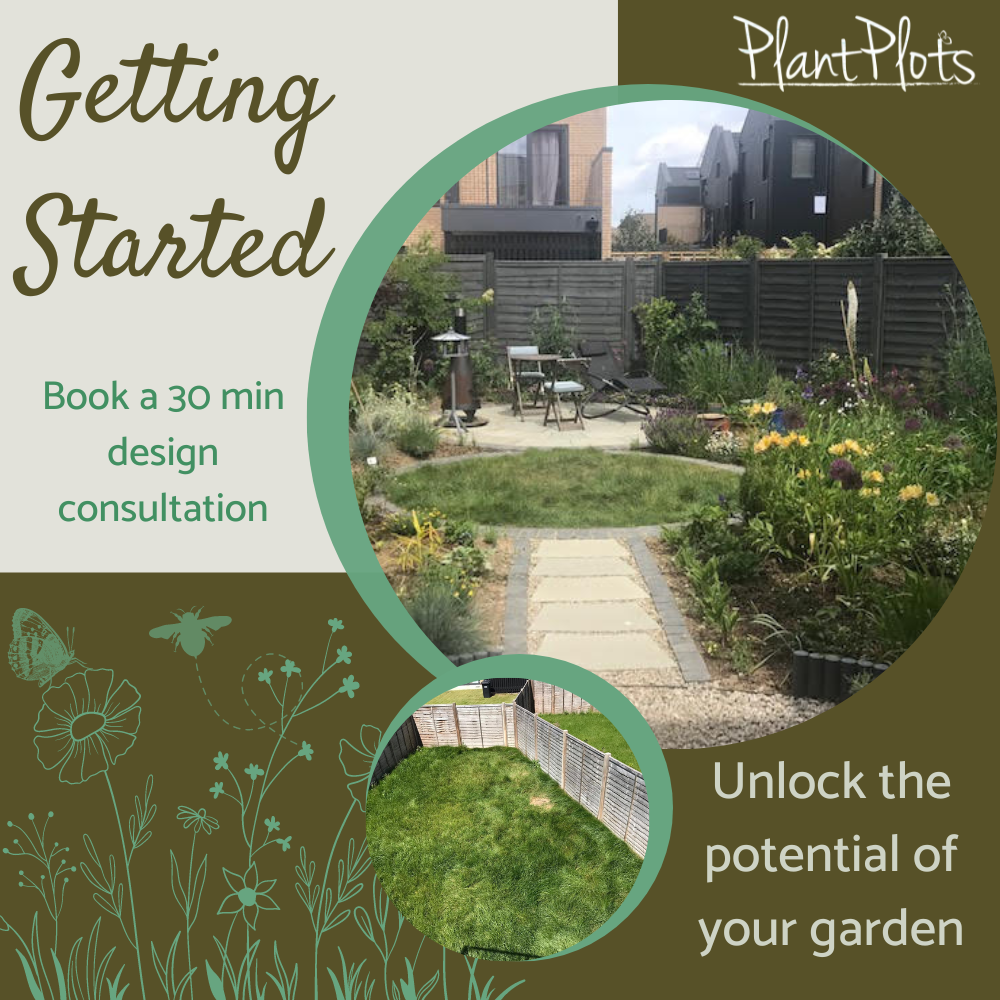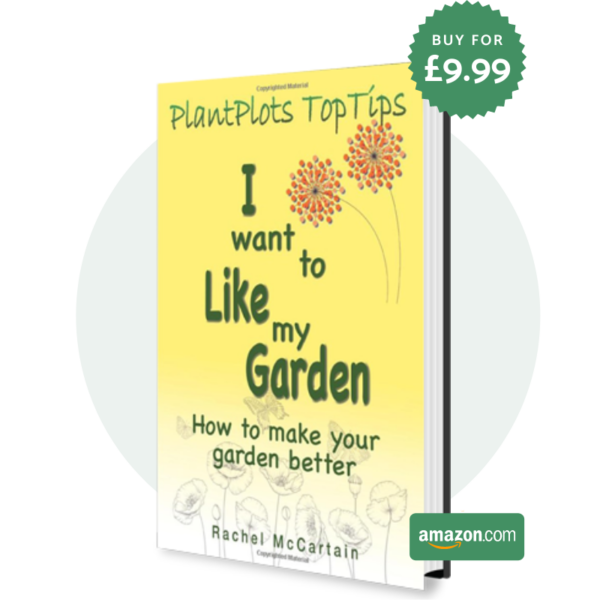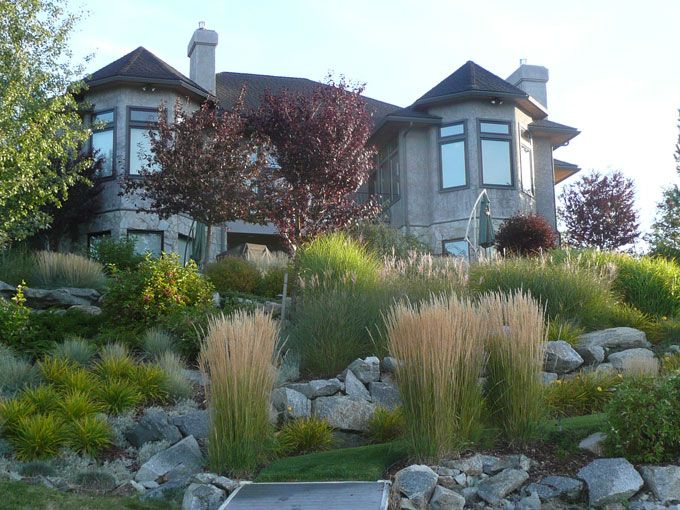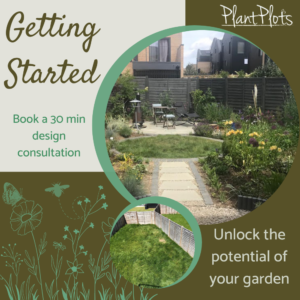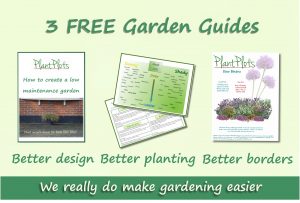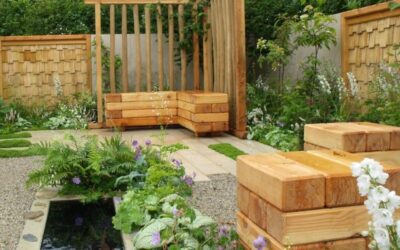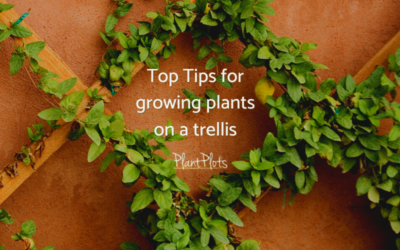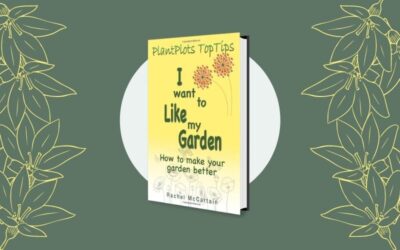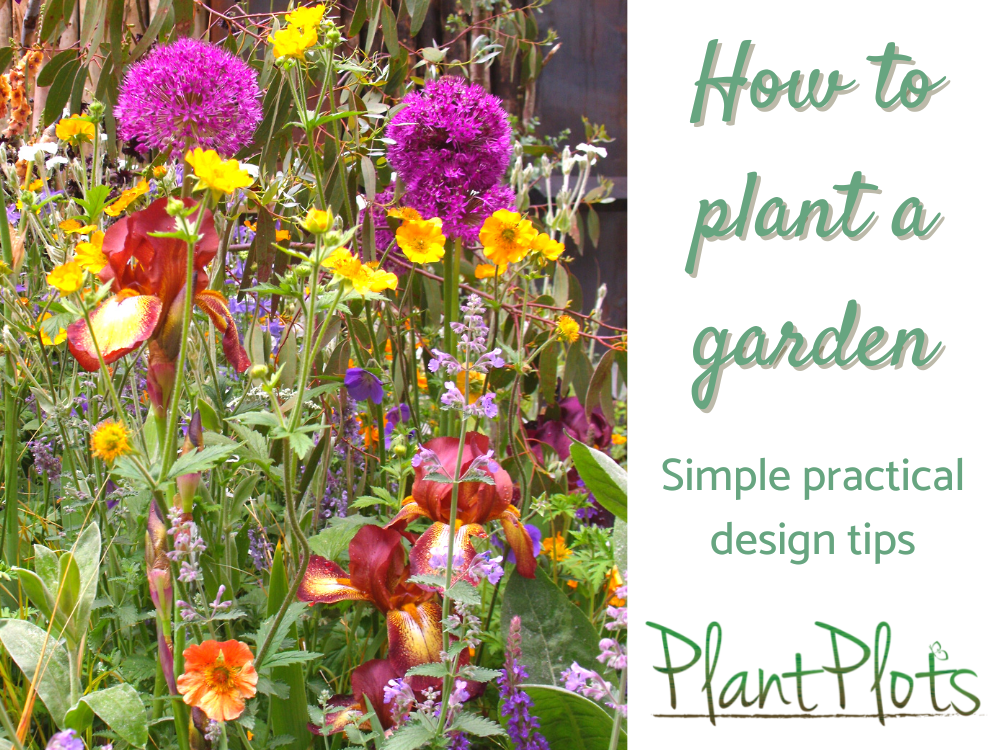
How to plan the garden around the climate and terrain you live in
Brilliantly simple garden design advice for every type of garden
If you want to have a garden that is easy to look after and that works for you and your family, then the starting point is understanding how Mother Nature and the Environment will mess up your design ideas and plan accordingly!
PlantPlots design service is just perfect if…
- You want to make your garden better; but don’t know how
- The garden is an awkward shape
- It’s your first ever garden
- You’ve seen lots of pictures you love – but aren’t sure it would work in your garden!
- You only want help with part of the garden
For more really useful advice on every aspect of design we could think of…
Sometimes you don’t need a design, you just want professional advice to sort out part of the garden.
Try our video consultation service.
Helping you make your garden better
Planting ideas
Border Plans and Garden Advice
Unsure what plants to use? No problem, just use one of the border designs we have created. You’ll know what to plant, how many to use and how to look after them.
Now clearly we could write a book on garden design that will help you plan even the narrowest of gardens better – which is brilliant because there IS a book to help you
I Want to Like my Garden by Rachel McCartain available at Amazon and other online bookstores in eBook and Paperback
Dealing with Wet and Boggy Gardens
Planting advice for a Wet Garden – do you have a soggy bottom?
Good garden design should always focus on ‘working with’ rather than imposing on nature. If the ground in the garden drains poorly and stays waterlogged, identify the cause; before you start planting.
Is it due to natural causes, low-lying ground, a high water table or the proximity of an underground spring for example?
Or is it due to poor drainage, or is it caused by surface runoff collecting in an area?
Natural Causes:
There are 2 easy solutions here, firstly choose only plants that will thrive in boggy ground as shown below, and there are loads more to choose from. or build raised beds and plant into those – this will prevent the plant roots from rotting off in the wet soil.
Poor drainage:
Drainage can be improved by adding grit to the bottom of planting holes. Also, add a medium to the soil that will hold it more open. For example, a fibrous ground conditioner dug well into the soil will allow the water to freely drain through to the subsoil underneath.
Drainage can also be improved by planting plants that suck up a lot of water too. Large shrubs and small trees will help improve waterlogging. Incidentally, with some shrubs and trees such as willow be careful where you plant. Willow roots seek out water voraciously and can travel many metres to find it. You should not plant a Willow tree closer than 100 ft (30m) from your house. Willow roots can break through drain pipes or burrow under foundations.
If in doubt visit an Arboretum and get specialist tree advice if you need to plant near your house.
Surface Run-off:
Once again, water runoff is not a problem unless it cannot drain away quickly, so in this case, installing soak-away drains (essentially gravel-filled holes) or underground drainage pipes that carry the water away elsewhere should resolve the problem permanently, a cheaper solution, however, would be to use raised beds and or pots to lift the planting away from the standing water.
Planting in Hot Sunny Gardens
Planting a hot sunny garden requires some preparation if the plants are to thrive.
We all love a bit of sun, and so do plants, in fact many love being absolutely baked by the sun all day. Well they don’t have to worry about wrinkles and free radicals damage. However, the key to ensuring the plants in the garden thrive in a hot sunny garden is all down to the soil.
So if your soil looks like this….
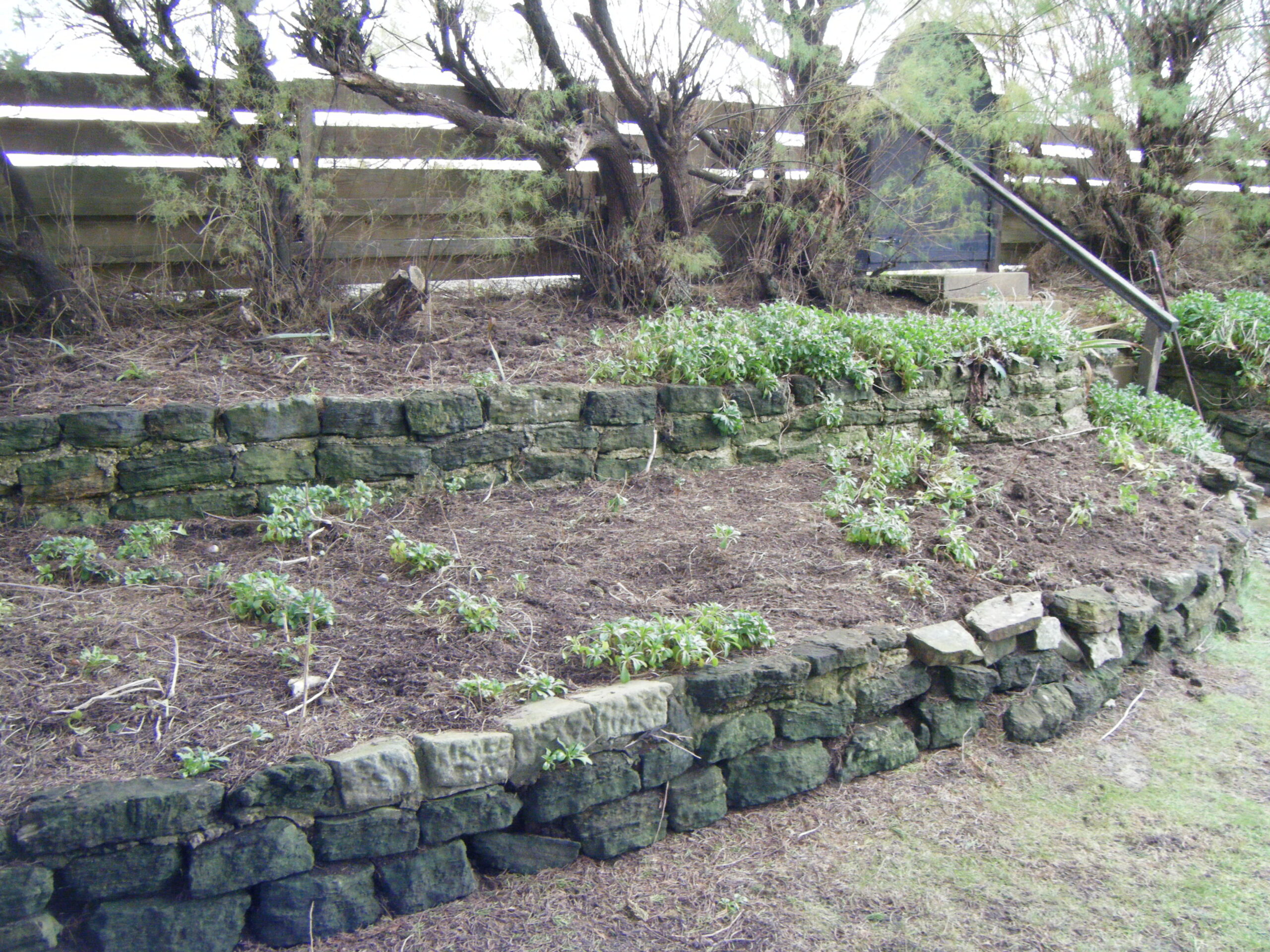
your plants will not look like this in summer!
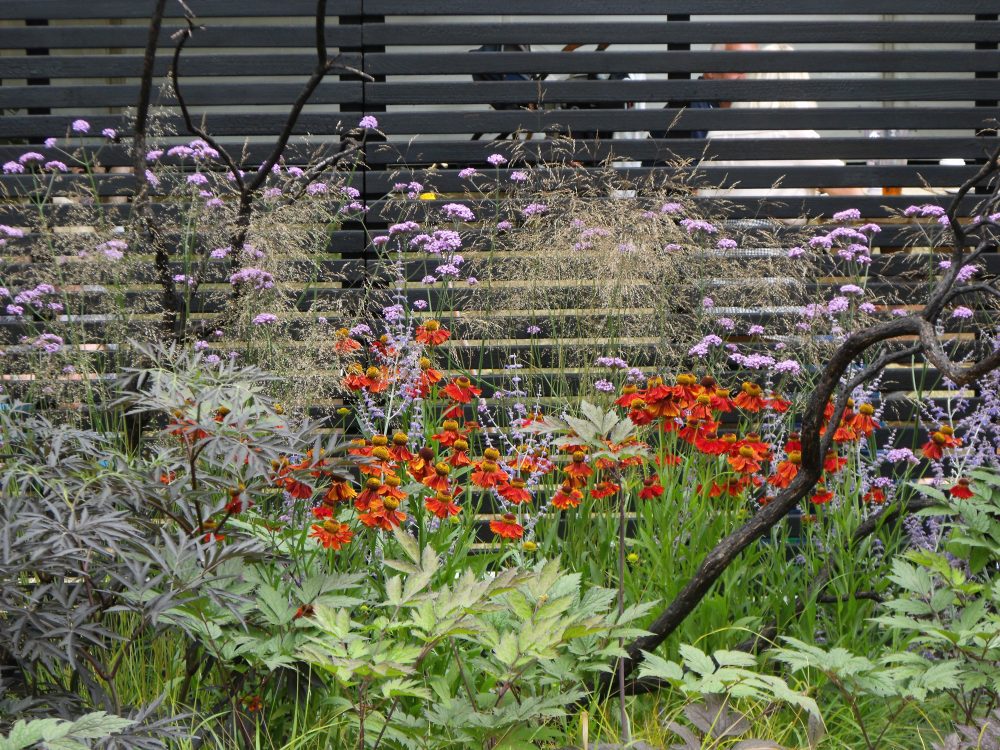
So come the Autumn, Winter or even the Spring, add loads of well rotted compost or manure to the soil. This is especially important if you have clay soil. The fibres in the manure hold moisture, but more importantly these prevent the tiny clay particles clumping together. This ensures the soil stays loose and friable even in hot weather. If the ground is not baked hard like concrete, the plant’s roots can penetrate the ground more. Seeking out the cooler more moist soil below.
Don’t cover the base of the plants with it, but spread it round amongst everything at least 5-6cm deep, better 10cm deep.
Then your flowers will bask in the sun but have their toes dipped in ‘a cool pool’.
How to deal with Windy Gardens
Solid barriers only deflect the wind to another part of the garden
Plants are used to growing whatever the weather throws at them, if they wern’t, the world would look like a desert. But in domestic gardens the wind can be more of a problem; we plant unsuitable plants for the environment we have and the buildings and fences themselves alter the airflow creating eddies and turbulence which can flatten your plants.
So, the key to coping with the wind is to find a way to ‘slow the flow’.
How to deal with windy gardens? Smaller gardens generally suffer from two types of wind.
- A funneling effect as it speeds up between narrow spaces.
- Turbulence; as the wind is deflected up and over walls or structures.
Here’s the meteorological bit, but the basic principle is this; when wind hits a solid object it goes up and over, but it doesn’t get slowed down much. Secondly if it passes through a narrow gap it gets squashed and flows faster thus creating a wind tunnel effect.
Windbreaks and shelter belts are not designed to stop the flow of the wind; just slow the wind down and disrupt the flow.
NB: The fastest wind is shown red, the ‘broken wind’ green.
The top diagram here shows a more traditional shelter belt. Wind is deflected up but is also allowed to pass through the windbreak, dramatically reducing the speed of the air.
Trees diffuse the wind speed, but you need more than one
In the lower diagram, the windbreak effect of a large tree is shown, airflow is reduced, but noticeably not at the base under the branches.
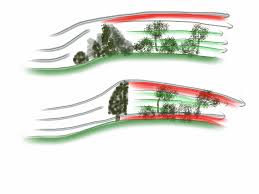

Solid fences don’t slow the wind down – open slatted double sided fences are better
The top image shows a fence that has open horizontal slats on either side of a post, these allow the wind to pass through, more slowly, leaving the faster wind level above the fence line.
If you just have a fence or wall. The wind simply goes up and over and is only ‘calmed’ near the base of the wall, most of the plants still get a bit of a battering.
Create a garden sized shelter belt using a mixture of small trees and shrubs pruned into tall columns. These will slow the wind down, so here’s the physics bit.
For every 1m of height, you get 2m of wind break.
So if your patio is 5m from the fence line, you need 2.5m height at the fence to slow the wind reaching the patio.
Then use the effect of the wind to your advantage, watch it. Add lots of plants that will move with the breeze. You can’t stop the wind, so fill the garden with soft willowy plants that will sway and move. It makes the garden interesting to look at.
So fast flow is now slow flow – and your plants will love you for it.
Planting a Garden on a Slope
Access and Maintenance:
How much is the garden going to be used?

The design the garden takes needs to really reflect how much use it will have as opposed to how much use you think it will have. For example, at the top of the garden, there is a lovely view, but access to it is awkward. The standard design model would create a seating area at the top of the garden to maximise the view.
The question though, is whether installing a patio will mean everyone makes the effort to climb to the top to use it.
Are you really going to traipse to the top with a cup of tea each time you want to sit outside for just a few minutes?
Maintaining a garden on a slope is tricky, let’s face it, the weeding can be a real chore at the best of times, but add to that the added ‘faff’ factor of climbing up a slope as well, and one’s enthusiasm for a gorgeous manicured haven of flowers could be hard to achieve!
There are some basic rules of thumb though that designs can follow:
- Create one flat space to sit out in, that holds a table and chairs AND is simple to access from the house.
- Terracing the garden will allow more of it to be usable BUT it is expensive to install. Ensure the flat bits are created where the nicest parts of the garden to sit in are. Terraces don’t need to be evenly spaced or identical heights
- Accept that maintenance is more difficult on a slope, so choose plants that won’t grow too quickly!
Drainage and Runoff:
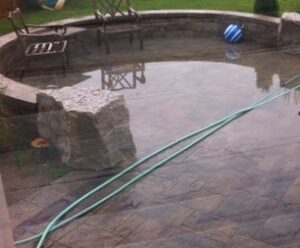
Now, this is blindingly obvious, but sadly often not considered properly. Rainfall will run down the slope, no surprises there; but what this means is those plants at the top of the slope need to be able to suck up the moisture quickly before the water drains away AND what happens at the bottom of the slope!
The slope will channel the water downhill, so what is at the bottom, your patio, a retaining wall… the back door?
Over-compensate for water runoff. The climate crisis means more intense rainfall, so, factor that in when designing the drainage channels at the bottom of the slope.
Plants at the top of the slope need to be more drought tolerant, those at the bottom need to be better at sucking up rainfall
Erosion:
Gravity is a problem on a slope; all the forces point to the bottom of the slope. Everything will fall downhill unless there is a force holding it in place. Take the example of this sloping garden, currently, it is grassed over, and the knitted root system is the force holding everything in place. The roots bind the soil in place, remove the grass and the soil will look to slide to the bottom.

So what does this mean, well, you need to create new forces to hold the soil on the slope. Creating a terrace adds the retaining force back in. If the slope is not going to be terraced, then the plants will have to hold the soil in place.
The best plants to choose then are those plants that spread via underground roots.
These root systems will gradually weave together and help prevent soil erosion. Plants such as Persicaria, Lysimachia, Mint or Pachysandra which in a normal garden might be too vigorous, on a sloping space will quickly fill bare patches and help knit the soil together.
Ensure 80% of the plants have good root systems to help keep the soil on the slope.
Light levels:
It may not seem to be that important, but there is less light at the bottom of a slope, purely because is falls into shade sooner than at the top of the slope – this is more pronounced on north facing slopes. If taller plants are placed at the top of the slope, their shadows drop light levels even further. It is not a massive problem, just one you need to consider before you plant.
Most garden designers and landscapers would always recommend terracing sloping gardens. Terracing levels parts of the garden and improves access, so this must be a good thing. Well perhaps yes and perhaps no, and this is why.
Sloping gardens are undoubtedly a design challenge, but the slope itself should not be regarded as the problem that must be designed out. The slope can provide opportunities for a more interesting garden. This post about designing a garden on a slope aims to show how to work with the terrain of the garden to create a more usable space, without spending a fortune on terracing!
Basic Design Principles when dealing with a slope
There are 4 basic principles to remember:
- Up slopes make the garden appear shorter.
- Down slopes give the appearance of a long garden.
- Bright colours tend to appear closer than paler pastel colours.
- Surface water runoff and drainage are issues that need to be addressed
One train of thought is that the slope is a waste of garden space, as such using terracing to create more level areas in the garden must make the garden a more usable space – and indeed it does. However, the question that perhaps needs asking is this; how much extra benefit will have 2-3 flat areas of the garden make, compared to the cost of creating the terraces?
Do sloping gardens waste valuable space?
The usability and function of any garden is obviously very important, especially as gardens are shrinking in size. Modern gardens need to work harder to ensure you get maximum benefit. So, having a space that is not flat must then render it unusable and as such wasted, surely? Well only if that part of the garden IS the part of the garden you would prefer to sit. If the slope is in an area that you would not want to use, how does the terrain adversely affect your life?
Using terracing to create extra flat areas will not make you use that part of the garden. You will have just spent a lot of time and effort levelling off ground. It is really important then to consider what you would actually use the space for before you start digging.
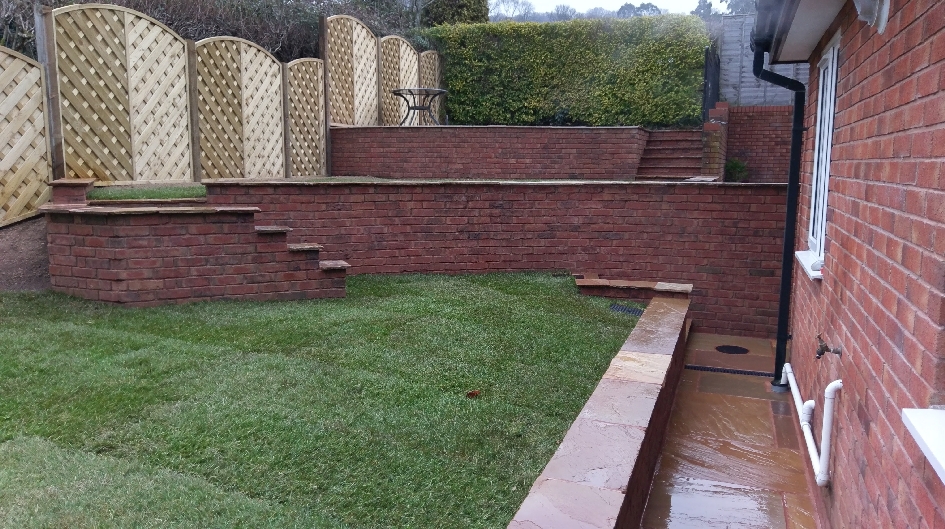
Just because you pop a chair on the top terrace, it won’t make you sit there if it’s easier (and sunnier) nearer the house.
There are 3 questions to ask of any garden, flat or sloping, that determine the starting point for any design:
- Where is the nicest part of the garden to sit?
- How do you get there?
- Once there, what is worth looking at?
The issue of the slope, at this stage, does not come into it. So in the above image, the top terrace has a little seating area, which is lovely IF that is the part of the garden that gets the sun at the time the owners are most likely to want to sit out. We are inherently lazy creatures (in spite of our best intentions), you simply will not bother to walk uphill to a top terrace unless that terrace IS worth sitting on.
Sloping gardens do not then waste space but terracing can waste a lot of money!
Simply creating a terraced seating area will not make you use it. In addition, building and landscaping a terrace is very expensive. But if ALL of the garden is not used once it’s built, the cost-benefit ratio is out of balance. Which means money, time and resources have been wasted.

An alternative approach
This alternative viewpoint focuses more on how you would use the garden, this creates areas of used and unused space. The used areas need to be flat and accessible, the rest of the slope can be left as it is; you would not be walking or sitting in these areas. These areas can use plants to disguise the contours of the land, giving the impression of terracing without the expense of actually building it.

Imagine using plants to give the impression of terracing instead, Lavender for example; loves good drainage, and thrives in the sunshine and poor soil. Plant the lavender across the plane of the slope, leaving gaps between the rows. infill the gaps with plants that vary in height, the rows of lavender become the levelling elements, disguising the slope. Plants like box or sarcococca can be used in the same way if the slope is less sunny.
The horizontal lines the plants give the impression of terracing, large boulders can also be used.
To make a more interesting garden display, vary the heights of the plants used, if all the plants added are the same height or shape, the angle of the slope is just highlighted. Use tall upright plants to hide the contours of the slope.
Finally, what would make you go to the end of the garden?
If this involved walking up or down a slope, there must be a reason to venture to the end. Just having somewhere to sit is not enough. It needs to be somewhere that is worth the effort it takes to get there. Instead of just a seat, have swing seat, or a focal point that invites a closer look; or even better, make the journey either there or back just full of fun.
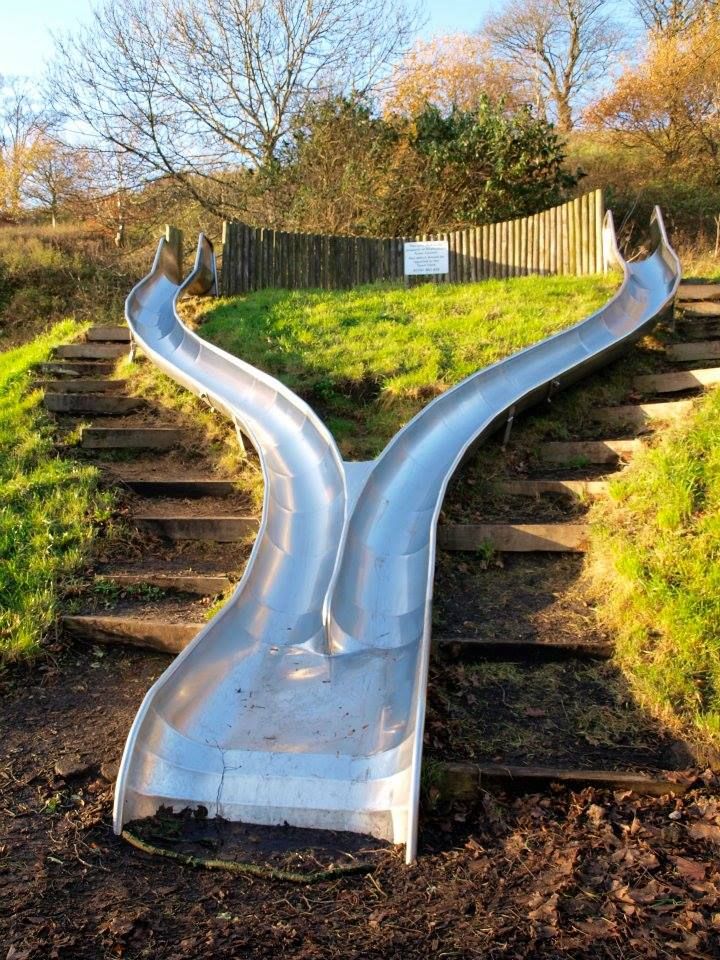
It wouldn’t just be the kids that went down the slide, would it?
It is not that terracing a garden is a bad option, it’s just an expensive one. If reading this post it just makes you think about how you will use the garden. Rather than creating areas you might use, the garden created will be better.
Now clearly we could write a book on garden design that will help you plan even the narrowest of gardens better – which is brilliant because there IS a book to help you
I Want to Like my Garden by Rachel McCartain available at Amazon and other online bookstores in eBook and Paperback
Planting in a Cold and Exposed Garden
Frost hollows, Freezing Winds and Soil erosion – it’s a challenge!
How can you encourage plants to grow happily in a cold exposed garden?
The key is a shelter belt, which means a deep planting of dense trees and shrubs that deflect and absorb the worst of the wind.
The destructive effect of the wind is ‘broken’ by the the branches, both slowing and reducing the force of the wind. Single tall trees are not as effective as the wind merely scoots underneath. So once you have a shelter belt, then the downwind side, should be able to develop a more sheltered climate allowing you to plant. You will need to windbreak the shelterbelt using windproof mesh to allow the shelter belt to extablish before you can plant anything.
The second problem are frost pockets. Cold air sinks and fills hollows or dips with cold freezing air, if these areas are sheltered from the wind too, then the frost is deeper and more penetrating.
As we can’t control frost, it is sensible to try to only plant with frost-hardy plants. Also, ensure the soil is well drained as it is a combination of cold and wet that usually kills the plants.
Lastly exposed sites are subject to damaging rains, this causes the topsoil to be eroded and washed away. Consider creating berms, these are raised mounds of earth into which you plant. However, as the site is exposed, cover these raised berms with a soil membrane and plant into this, the membrance prevents soil erosion by wind and rain.
Establishing a garden in a cold exposed site takes more time, so don’t rush. All the plants will need staking and protecting from the effects of the weather until their roots are firmly embedded in the ground.
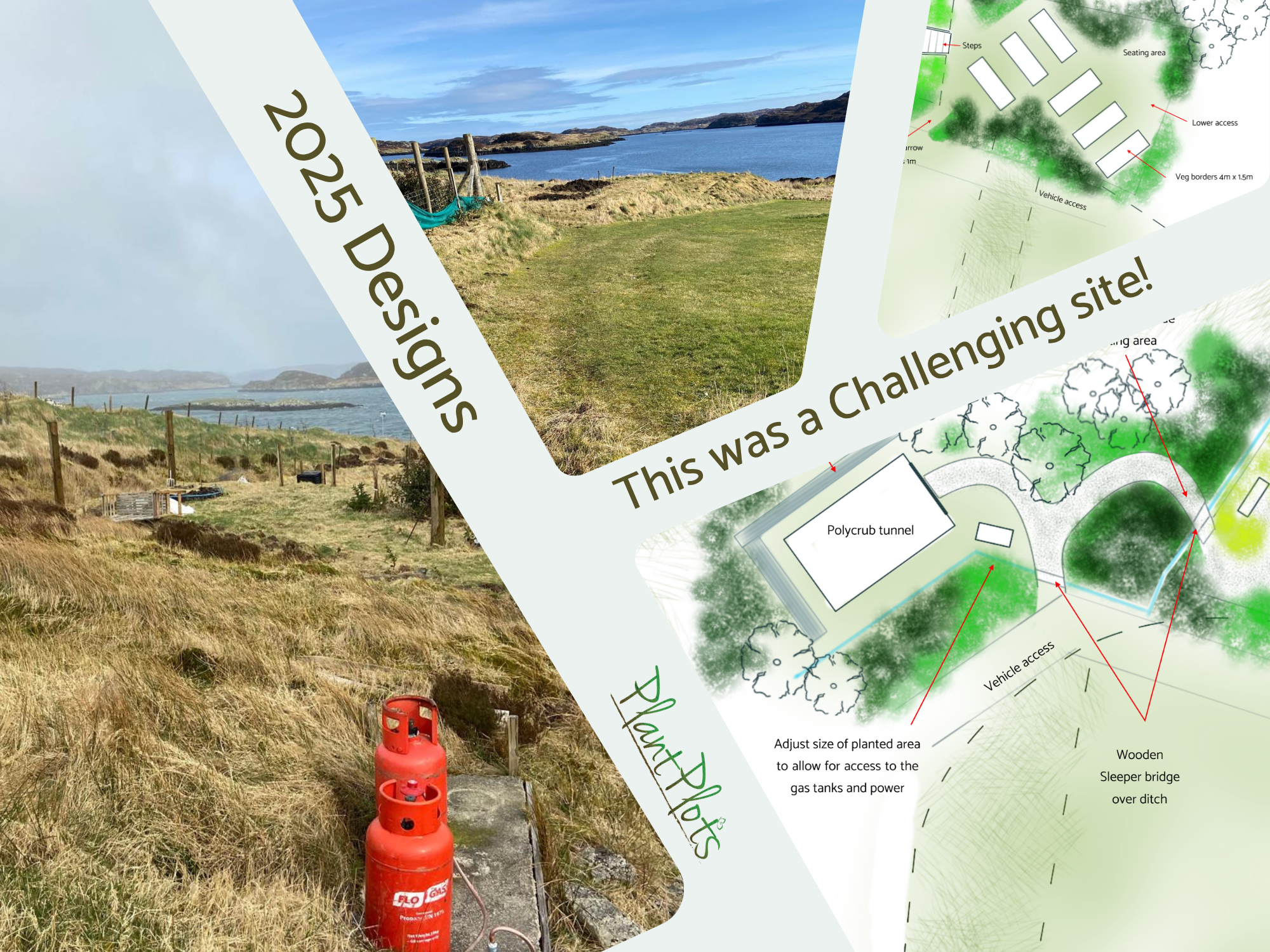
Planting a Garden by the Sea
Seaside Gardens – great or not?
Sounds romantic doesn’t it, the thought of sitting in the garden watching the sun set into the sea. And there are many days that is possible, sadly in the UK, there are many days when it’s not! Seaside gardens contend with two problems wind and salt.
So if you have a garden by the sea, you have to decide what you really want. Is it an unencumbered view of the sea – you will have to sacrifice most garden plants.
If it is a lovely garden then you will have to sacrifice the view of the sea – as you will need a shelter belt of tough salt tolerant shrubs.
Having said that seafront gardens can be packed full of plants. They do not have to just consist of sea kale and a few tiny low growing plants clinging onto the shingle.
The first element is to protect plants from the wind until they are established. You have to plant the shelter belt first. Ensure these plants although tough, have some protection (a mesh panel is good to start with and is easy to remove later).
There are some useful tips to help you get started;
Use plenty of bulbs these die down in winter and are thus protected from the worst storms.
Use salt tolerant shrubs on the sea’s side and plant your more tender plants on the other side for added protection.
Plant more densely than normal, that way each plant protects and holds up each other.
Do consider using frost tender plants – you can generally avoid frost on the coasts, so you can grow stuff no one else can.
Lastly if you use fencing as a windbreak use open slatted panels rather than the standard larchlap panelling. This allows the wind through the panel with less chance of the wind blowing down the panel.
A wind break isn’t a wind block – it slows the wind down rather than stops it.
Planting ideas
Border Plans and Garden Advice
Unsure what plants to use? No problem, just use one of the border designs we have created. You’ll know what to plant, how many to use and how to look after them.
